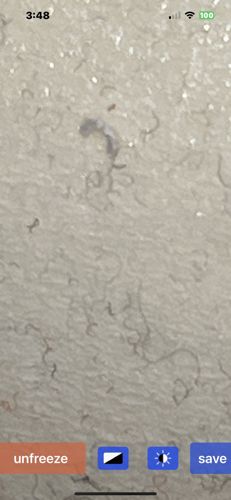Fungus Gnat Larva / Sciarid Fly Larva
Scientific Name: Bradysia spp. (or other genera within Sciaridae)
Order & Family: Diptera, Sciaridae
Size: Larvae are typically 4-10 mm long, thin and whitish with a distinct black head capsule.

Natural Habitat
Moist, organic-rich environments, often in potting soil of houseplants, greenhouses, or decaying organic matter. The larvae require high humidity.
Diet & Feeding
The larvae primarily feed on fungi and decaying organic matter in the soil. They can also feed on plant roots, especially tender root hairs of seedlings and young plants, causing damage.
Behavior Patterns
Fungus gnat larvae are known for their characteristic 'snake-like' or 'processionary' movement due to their flexible bodies. If soil conditions become too dry or food sources deplete, they may move out of the soil. Adults are short-lived, weak flyers attracted to light and moisture.
Risks & Benefits
Risks: Can be pests in houseplants, nurseries, and greenhouses, particularly to seedlings and young plants, as their feeding on roots can stunt growth, cause wilting, and even plant death. They can also spread plant pathogens. Benefits: In natural environments, they contribute to the decomposition of organic matter and nutrient cycling.
Identified on: 9/22/2025